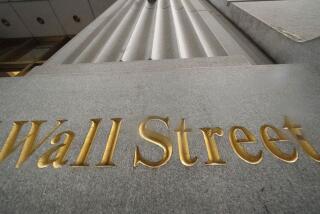Bank of Japan Cuts Discount Rate to Boost Slow Economy : Economies: But analysts say drop to 1.75% is not likely to result in more imports to bring down trade surplus with U.S.
TOKYO — The Bank of Japan today opened a new low-interest era for Japan by slashing the key rate it charges on loans to commercial banks to a historic low of 1.75%.
Today’s discount rate cut--from 2.5%.--is considered a mark of unprecedented pessimism over the outlook for the Japanese economy.
But it also gives Prime Minister Morihiro Hosokawa one more piece of evidence to cite in trying to convince President Clinton that Japan is doing its best to stimulate economic growth and pull in imports to cut Japan’s burgeoning trade surplus.
The two leaders are scheduled to meet in New York on Monday when they both attend a U.N. General Assembly meeting.
The rate cut followed the Hosokawa government’s announcement last week of a set of measures designed to prop up an economy that fell 2%, at an annual rate, between April and June.
The bigger than expected cut of 0.75% “shows the Bank of Japan’s awareness of the severity of economic conditions,” said Hidetoshi Tsuchiya, chief researcher at the Sanwa Research Institute.
Earlier, Yasushi Mieno, the bank’s governor, had repeatedly criticized his predecessors for maintaining a 2.5% central discount rate for more than two years--since February, 1987--and creating a “bubble economy” of soaring land and stock prices in the late 1980s.
But with corporations suffering increasingly sharp declines in profits and announcing plans to slash labor forces through attrition and early-retirement programs, the decision was not expected to spur additional investment. “Corporations simply no longer want to borrow funds,” S. G. Warburg Securities said in an analysis.
But, like the latest cut in the central discount rate last February, it was expected to help banks cope with the costs of writing off bad debts accumulated during an orgy of “bubble economy” lending.
“The key is whether banks are prepared to pass on lower funding costs to customers by offering lower effective rate on new loans,” the Warburg analysis said. After the cut in February, only part of the lower costs were passed on.
The Nihon Keizai newspaper predicted that banks will lower their short-term prime rates charged to their best customers by only 0.5%.
Natsuhiko Maeda, chief researcher at the Fuji Research Institute, said that “we cannot expect the move to create new demand, although it should at least act as a prop to profits of firms who indulged in overspending during the bubble economy.”
Takashi Koshiro, vice president of the Morgan Bank, said he expects “no effect at all” on growth.
But an indirect effect could come through foreign exchange markets, where record low interest returns on the yen were expected to halt or slow the rise in the yen. Appreciation of the yen has cut into exporters’ short-term profits.
In New York on Monday, the dollar rose to 104.60 yen--from 104.47 on Friday--in anticipation of the rate cut, but fell slightly, to 104.55 yen, in early trading Tuesday in Tokyo. Tokyo stock prices initially surged after the rate cut announcement Tuesday morning before falling slightly. The Nikkei 225 benchmark index initially shot up 1.02% to 20,495.85, its highest level in the last two trading days, before coming back down to 20,372.64 at midmorning Tuesday.
After two massive doses of more spending under former Prime Minister Kiichi Miyazawa in August, 1992, and last April, the lending rate move, in effect, was the last card available to government policy-makers--short of an income tax cut, which the Clinton Administration has urged. Hosokawa, in announcing his economic package on Thursday, ruled out any income tax cut without a compensating increase in other government revenue.
More to Read
Inside the business of entertainment
The Wide Shot brings you news, analysis and insights on everything from streaming wars to production — and what it all means for the future.
You may occasionally receive promotional content from the Los Angeles Times.










